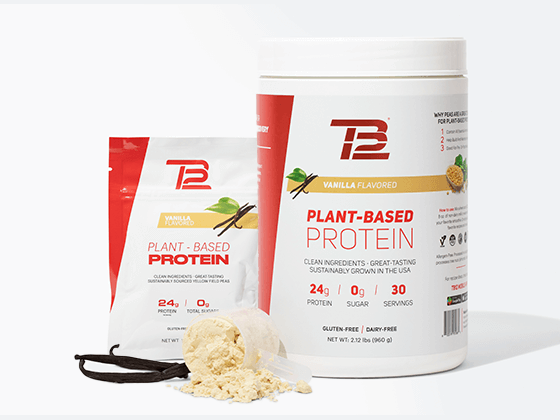WHY EMPHASIZE SPEED OF SPORT? Conventional wisdom says that lifting more weight is better, running farther is better, and working out longer is better. It’s an attractive way to look at training for a lot of reasons — one being that it’s a simple, quantifiable way to see progress. But we all know this is too simple to be true. Granted, sometimes a sport is as simple as that, like running a marathon. You either get to the finish line in time or you don’t. But in other sports, being a “good athlete” doesn’t have anything to do with how far you can run, how much weight you can lift, or how long you can work out before you need to quit. Usually, success in sports depends on your ability to move your body in a very specific way — and at a specific speed. Read on to learn how the speed and type of your training affect the structure of your muscles — and how you can use this to be a better athlete.
Your Body Moves With Two Types Of Muscles: Fast-twitch And Slow-twitch. The muscles you use to move your body can be broken down into two main categories: slow-twitch (Type I) and fast-twitch (Type II). These different types of muscle fibers are useful in different ways. Slow-twitch muscle fibers are relatively small and surrounded by tiny blood vessels, which makes them more efficient and easier to recharge than fast-twitch fibers. Slow-twitch fibers give you your aerobic endurance, and endurance athletes tend to have more slow-twitch fibers. Fast-twitch muscle fibers are larger and more powerful than their slow-twitch counterparts, but this advantage comes at a cost: they’re relatively inefficient. Think of them as the trucks of muscle fibers: they can easily tow a large load, but they can’t get nearly as much mileage as a slow-twitch. This is why you might be able to do 50 box jumps in sets of 5, but you likely can’t do box jumps for two hours straight. Box jumps take explosive power, which comes from fast-twitch fibers. These fibers have a high force output, but they’re quicker to fatigue.
Myth: You Can Train Your Muscles to Grow More Type I or Type II Fibers. Research suggests that the way you train doesn’t actually change the “type” of muscle fibers you have, nor does it change the number of fibers of each type. The distribution of fast- and slow-twitch fibers in your body is largely determined by your genes, which is why some athletes are naturally better suited to sprinting, others to powerlifting, and others to marathon running. However, different types of training do train your muscles to grow in different ways. For example, resistance training increases the size of your fast-twitch muscle fibers, which allows them to contract tighter and put out more force. Endurance training, conversely, increases the oxidative capacity of your slow-twitch muscle fibers — it makes them able to use more oxygen (often referred to as VO2-max). It also boosts the number of mitochondria in the muscle cells, which allows them to turn fuel into energy at a faster rate. While exercise doesn’t change the number of any type of fiber in your muscles, it changes the structure of the fibers that are already there so that the muscle can function better as a whole. Think of it like an economy — job supply and job demand. On the one hand, if there’s work to be done in tech, then more people will go to school to become engineers, which will eventually result in a large number of engineers at tech companies doing a large amount of technical work. (These are the mitochondria slowly growing in number inside your muscle cells.) On the other hand, if there’s a demand for manufacturing, more people will go into trades to learn how to manage and work in factories. (This is the growth of Type I, fast-twitch fibers in response to resistance training.) In the same way, your body specializes its muscles (its workers) to fit the demands of the environment.
The work you do in training prepares you for the work you do on the field. This is the core of effective functional sports training — mimicking the demands of the game and optimizing your body to meet those demands. Because different degrees of force output engage different muscle fibers, the speed of your training is important to your success as an athlete. If you’re a runner, for example, and you regularly squat hundreds of pounds, those slow, deliberate reps aren’t actually helping you to be a better runner. On the contrary, they’re training your legs to be slow and deliberate — the opposite of what you want. A better lower-body workout for runners would improve speed through explosive movements that engage fast-twitch fibers.
How Tom Brady TRAINS at the speed of his sport
When Tom Brady works out, he models his exercise after the demands of a football game. This means short bursts of 20 seconds of fast, high-intensity activity, then 20 seconds of rest. Why does he train so fast? To prepare his body to do the work. “When I go out onto the field on Sunday,” he explains, “I don’t want my brain to think, or play, slowly. That’s why I train fast…I train the way I want to play.”
Use Speed of Sport Directly in Deep-Tissue Work
The point of pliability is to train your muscles to stay long and soft at all times so they’re in an optimal state to meet the demands of your sport. To train your brain to keep your muscles long and soft during your workout, it’s essential to mimic the movements of your sport during a deep-tissue massage session. While in the massage, should attempt to contract and relax those muscles at the speed of your sport. If you’re a runner, you should contract and relax your leg muscles at a running pace or faster. If you’re a road-biker, the pace will follow the speed of your pedaling. This trains your brain to get used to keeping your muscles long and soft while you play or work out. Because different degrees of force output engage different muscle fibers, the speed of your training is important to your success as an athlete.
For optimal performance, train at the speed of your sport. As we talked about above, the demands you place on your body during training have a direct effect on the structure of your muscles. This, in turn, directly affects the type of work your muscles are specialized to do. If you’re a runner, there’s no need to bench 400 pounds. If you play football, there’s no need to train for a marathon. Any athlete looking to optimize performance has to look closely at the actual demands of the sport they play, determine the specific movements and skills required, and then translate those movements into functional exercises.





